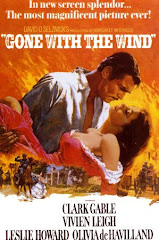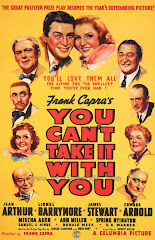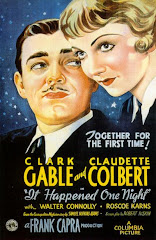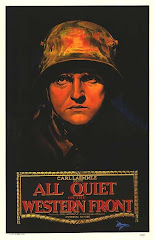Cast: Jean Arthur, Lionel Barrymore, James Stewart, Ann Miller
Genre: Comedy
Other Nominees: The Adventures of Robin Hood, Alexander’s Ragtime Band, Boys Town, The Citadel, Four Daughters, Grand Illusion, Jezebel, Pygmalion, Test Pilot
The 1930s was a very successful time for Frank Capra. We had already seen him direct the 1935 winner It Happened One Night and here we again see him direct the last Best Picture winning film of the decade, You Can’t Take it With You. These two movies have a lot in common. They are both romantic comedies and both pictures feature two young lovers from opposite classes. Most of the comedy found in these films is born from the clashing of the classes as the snobbish members of the bourgeoisie are forced to share tables with the common people. But as the title suggests, You Can’t Take it With You also carries with it some important life lessons.
The film centers on an unusually friendly and welcoming Sycamore family who have abandoned the grind of modern life and devoted themselves to doing what they want to do. The grandfather and head of the family, played by Lionel Barrymore, is the driving force behind this radical approach to life. He talks about how he was a successful business man who one day rode the elevator up to his office and then right back down again, deciding then and there to never set foot inside the building again. He instead turned to a life of stamp collecting and of having fun. The collective family all embody this freewheeling attitude to life with a wide variety of hobbies from chocolate making, to ballet lessons, to writing, to the manufacturing of firecrackers! A constant swarm of activity results from them all living under one roof and practicing these hobbies in a confined space. A framed “Home Sweet Home” picture constantly falls from the wall and is hung back up by various characters throughout the movie and emphasizes the fact that this is a bustling, crazy place to live but also a place filled with love and warmth. Members of this household are rarely stressed, not even when Internal Revenue officers stop by for a chat, as we see in one scene. It quickly becomes equally as uplifting an experience to watch the activities of this family as it appears to be to live with them there.
The youngest of the family is played by the gorgeous Jean Arthur and she has fallen for son of a banking magnate played by James Stewart. The two are very much in love and perfect for each other but both are struggling with the concept of their families meeting. Opposing the gleeful utopia of the Sycamore family is the wealthy Kirby family who embody everything that the Sycamore family values are against? As you can expect the meeting of the two represents an enormous challenge for the Kirbys but also offers them a chance to evaluate their own happiness and their own way of life. In the end the film is as much an education for us as it is for the wealthy banker and his wife, and it is fitting that the title words are spoken by Grandpa to Mr. Kirby in an effort to make him, and us, see that money is not all there is in this world. There are more important things to invest your time in.
The other Capra film I am familiar with is, of course, It’s a Wonderful Life (1946). I mention it as it too shares commonalities with You Can’t Take it With You. Asides from starring the same lead actor, James Stewart, it also delivers that great message that friendships and kindness to others will in the end make you richer than any amount of money will. They are both movies that warn against a life of greed and suggest that you instead focus on building relationships with people. Interestingly enough, both movies also feature a very similar scene where the respective townsfolk enthusiastically gather money to help out (or bail out as the case may be) the main characters who they hold dearly. I have always been a huge fan of the famous Christmas movie and of this heartwarming scene but I have to say that after viewing You Can’t Take it With You I think that this earlier film does a better job at delivering the overall message of goodwill towards all.
I would like to finish on a different note. I found it fascinating how the threat of Communism was already rearing its head in the late 1930’s and is very present in this movie. I should make the point that the film does not demonize Communism and simply shows how the Sycamore family, in all of their innocence and love for life, become suspected of being Communists. It is a shame that the very things that should be admired in a family like putting each other first, being fun loving, happy, and welcoming to all people, are the things that bring them under suspicion. Grandpa quotes Lincoln when describing the family’s attitudes: "With malice toward none, with charity to all". The film tries to show that we should not judge everyone who is different as being evil but more impressive is that it tries to show this in a time when being different did result in a lot of scrutiny. I imagine that this film ran the risk of being very unpopular. I have pulled some dialogue from the movie where Grandpa talks to his daughter about what he calls “ism-mania”, a trend he sees all around him:
Grandpa: Penny, why don't you write a play about Ism-Mania?
Penny: Ism-Mania?
Grandpa: Yeah, sure, you know, Communism, Fascism, Voodoo-ism, everybody's got an -ism these days.
Penny: Oh [laughs] I thought it was some kind of itch or something.
Grandpa: Well, it's just as catching. When things go a little bad nowadays, you go out, get yourself an -ism and you're in business!
I think I should applaud the Academy for recognizing a comedy that, under the surface, is tackling such a great societal problem.
Next Up: Gone With The Wind



















































Gotta love James Stewart :) Have you seen the Shop Around the Corner?
ReplyDelete@Ruth I have not seen Shop Around the Corner. I am assuming I should... :)
ReplyDeleteI have that picture that keeps falling off the wall. I can't say it is THE picture, but it is identical. I have had it since the late 70's
ReplyDelete